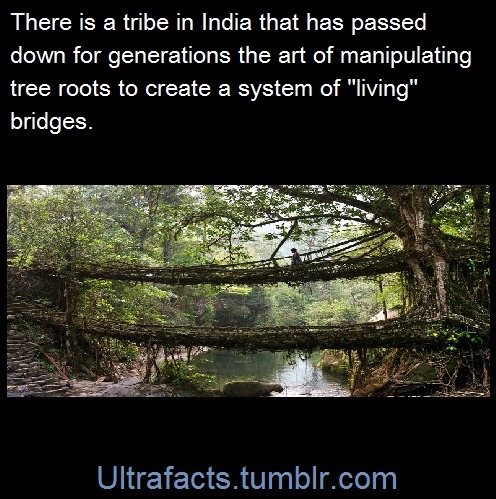hearts-wires:ayellowbirds:ultrafacts:sky-dragoon-twilight:ultrafacts:SourceFollow Ultrafacts for mor
hearts-wires:ayellowbirds:ultrafacts:sky-dragoon-twilight:ultrafacts:SourceFollow Ultrafacts for more factsWHOA!They are not some anonymous “a tribe in India”, they are the War-Khasi. Speaking as a former anthro student and as a reference librarian, I am beyond sick of posts (and articles, and emails, and museum displays) like this that present the work of a people without actually naming the people. It’s erasure, it’s reducing the great works of a culture to an Ozymandias-esque curiosity for foreigners to consume rather than an accomplishment that should help bring awareness of that culture’s existence. They are the War-Khasi, a division of the Khasi, a people who call themselves Hynñiew Trep. They live in Meghalaya, and they have been building these bridges in the town of Cherrapunji for longer than anyone knows. They are not anonymous.@ayellowbirds Thank you for this!!A few small corrections: 1. ‘Hynñiew trep’ (seven huts) is a part of folklore and refers to a place from which two tribes emerged: the Khasi and the Jaiñtia. Contemporarily, a region in eastern Meghalaya is called Ri Hynñiew Trep, where both the Khasi and the Jaiñtia tribes reside. It it does not refer to people and we do not call ourselves Hynñiew Trep.2. Root bridges are not just located in Sohra (Cherrapunji is the colonial name of this town), but rather all throughout Meghalaya, particularly in the southern part. The earliest record of root bridges was in 1844, which happened to be the ones found in Sohra. Both Khasis and Jaiñtias have made root bridges for generations.ALSO I’d like to point out that the root bridges and the environment that surrounds them are in danger due to tourism. Excessive advertising of these structures as tourist spots have caused stress that the roots have never had to endure even two decades prior. From being used by just the local residents, quite a few root bridges are now seeing hundreds of tourists everyday. There’s not only undue strain on the structures, but also pollution; people throw trash, are noisy, and do not respect the environment.If you do visit the root bridges, please be respectful. Despite the prominent promotion of these bridges as tourist spots, people ought not to treat this as a structure available for consumption. People and other beings that use the root bridges are losing a very useful part of their lives; routes that have been around for centuries. Why I have cred: I’m half Khasi -- source link
Tumblr Blog : ultrafactsblog.com
